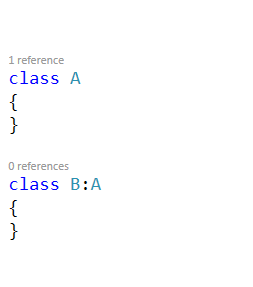Inheritance is an important pillar of
OOP(Object Oriented Programming). It is the mechanism in C# by which one class is allowed to
inherit the features(fields and methods) of another class.
It allows
you to define a child class that reuses (inherits), extends, or modifies the behaviour
of a parent class. The class whose members are inherited is called the base
class. The class that inherits the members of the base class is called the
derived class.
Please see following link for other OOPs feature.
What is Encapsulation in C#
What is Polymorphism in C#
What is Abstraction in C#
Please see following link for other OOPs feature.
What is Encapsulation in C#
What is Polymorphism in C#
What is Abstraction in C#
Why we use inheritance in C #
The re-usability of code & reduce complexity in
code and it is possible by using inheritance.
Important terminology:
•Base Class: The class whose features
are inherited is known as super class(or a base class or a parent class).
•Child Class: The class that inherits
the other class is known as subclass(or a derived class, extended class, or
child class). The subclass can add its own fields and methods in addition to
the super class fields and methods.
•Reusability & Reduce Time Complexity:
Inheritance supports the concept of “reusability”,
i.e. when we want to create a new class and there is already a class that
includes some of the code that we want, we can derive our new class from the
existing class(i.e reduce time complexity). By doing this, we are reusing the
fields and methods of the existing class.
Types of Inheritance in C#
Below are
the different types of inheritance which is supported by C# in different
combinations.
1. Single Inheritance: In single inheritance, subclasses
inherit the features of one super class. In image below, the class A serves as
a base class for the derived class B.
2. Multilevel Inheritance: In Multilevel Inheritance, a derived class will be inheriting a base class and as well as the derived class also act as the base class to other class. In below image, class A serves as a base class for the derived class B, which in turn serves as a base class for the derived class C.
3. Hierarchical Inheritance: In Hierarchical Inheritance, one
class serves as a super class (base class) for more than one subclass. In below
image, class A serves as a base class for the derived class B, C, and D.
4. Multiple Inheritance(Through
Interfaces):In
Multiple inheritance, one class can have more than one super class and inherit
features from all parent classes. Please note that C# does not support multiple
inheritance with classes. In C#, we can achieve multiple inheritance only
through Interfaces. In the image below, Class C is derived from interface IA
and IB.
Note :-
A subclass does not
inherit the private members of its parent class. However, if the super class
has properties(get and set methods) for accessing its private fields, then a
subclass can inherit.




Nice ...sir
ReplyDelete